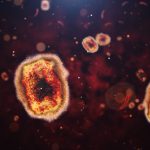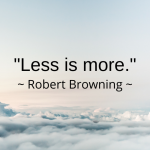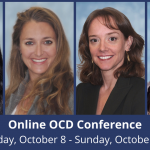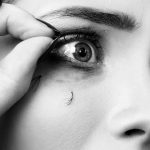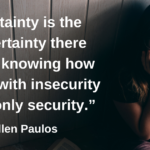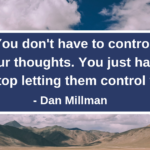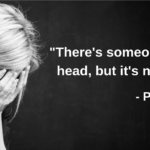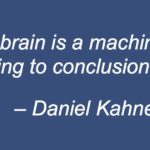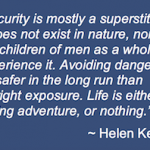Tyler Tran, MSW, ACSW, of the OCD Center of Los Angeles, discusses the impact of anime in therapy and its impact in building rapport, trust, and fostering connection in young adults and teenagers.
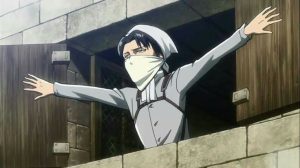
For many young adults and teenagers, managing OCD and anxiety can be overwhelming and isolating. But healing doesn’t always come in the form of medication or talk therapy. Healing to these individuals may come from a heartfelt story, a journey overcoming all odds and challenges, and a fable that engenders courage and resilience. Anime has evolved throughout the years and made difficult topics such as depression, anxiety, trauma, and grief easily understandable and relatable to teenagers and young adults. Anime refers to Japanese created animation with themes ranging from action packed adventures, slices of life, romance, epic fantasies, and much more. Characters in anime that struggle with internal conflicts, self-doubt, and emotional stress can be extremely affirming to a teen with OCD. For therapists, anime can offer a unique opportunity to foster trust and meaningful communication.
Starting therapy for teens and young adults can be a daunting and scary experience. Teenagers are expected to show up, disclose embarrassing and uncomfortable thoughts and emotions to a person they’ve never met, and learn a myriad of new concepts to combat these feelings. Anime can open the door to connection and help the therapist build trust and rapport with teens and young adults (Yuanyuan et al., 2024). When a therapist asks, “tell me about this anime you enjoy,” it doesn’t feel like a test, but rather a conversation. When someone feels seen and trusted, they’re more willing to open up about their obsessions, compulsions, and trust their therapist when they engage in exposure therapy.
Exposure and Response Prevention (ERP) is a type of behavioral therapy used in the treatment of obsessive-compulsive disorder (OCD). It is essentially facing your fears, sitting with the anxiety, and recognizing that your feared outcomes are not as scary as you make them out to be. Like exposure therapy, most popular anime’s have something called character development arcs. These arcs are periods where the protagonist undergoes intense training to grow stronger and protect the ones they love. Popular anime’s such as Naruto, demon slayer, and hunter x hunter demonstrate this trope very well. Being able to relate to teens and reference these training arcs to exposure therapy can guide the therapy sessions to communicate that their teen is growing and overcoming their fears despite feeling uncomfortable and anxious. Helping teens face their OCD may feel impossible, but when they see their favorite heroes and characters performing impossible feats, this may give them hope and inspire them to become their own protagonist.
Anime can also be a useful insight tool which allows the therapist to get a glimpse into the teens world and how they may view their obsessions. For example, a teen that struggles with contamination OCD may relate to a character in their favorite anime such as Levi from “Attack on Titan.” Levi has been shown to demonstrate contamination compulsions such as donning face masks, cleaning windows and furniture excessively, and having extreme disgust when it comes to dirt and germs. These references can support clinicians in understanding how young adults conceptualize their symptoms and develop analogies and metaphors to make ERP less daunting and more approachable.
Anime can be a great medium to teach teens to externalize the OCD and normalize struggle and growth. So many themes seen in anime include intense battles with guilt, depression, anxiety, grief, and identity. A therapist could ask “how do you think Deku felt when he had to push past his thoughts of self-doubt?” Or “what emotions do you think Tanjiro felt when he had to confront the Muzan?” These questions can offer insight into the teen’s emotions and encourage them to externalize their OCD into a battle that can be won!
Now, the good news is that parents don’t need to drop everything they’re doing now to become anime experts to relate to their teenagers. All you need is curiosity, an open mind, and a willingness to see the world through their eyes. Ask open-ended questions such as “what do you enjoy most about that character?” or “can you relate to that character in any way?” Maybe even asking them to show you one of their favorite episodes or a favorite scene from their show. Being able to connect with your loved one will foster trust and allow them to communicate in ways where they feel safe and seen.
At OCDLA, we understand that developing rapport and building a trusting therapeutic relationship is much more than a phase in therapy; it is the foundation of it. If anime offers a safe space, helps us connect with your teen, and allows them to face their anxieties, combat compulsions, and grow, we welcome it wholeheartedly. Because, at its core, therapy is about connection, not just techniques and tools. Sometimes, the connection begins with a favorite anime character.
References
Yuanyuan, C., Yahaya, W. A. W., & Jun, Z. (2024). Exploring Interactive Animation Teaching For Children And Adolescents’ Mental Health And Emotional Wellness. International Journal for Studies on Children, Women, Elderly and Disabled, 20, 70-79. https://ijcwed.com/wp-content/uploads/2024/03/IJCWED20_009.pdf
•Tyler Tran, MSW, ACSW, is a psychotherapist at the OCD Center of Los Angeles, a private, outpatient clinic specializing in Cognitive-Behavioral Therapy (CBT) for the treatment of Obsessive-Compulsive Disorder (OCD) and related anxiety based conditions. In addition to individual therapy, the center offers nine weekly therapy groups, as well as online therapy, telephone therapy, and intensive outpatient treatment. To contact the OCD Center of Los Angeles, click here.




